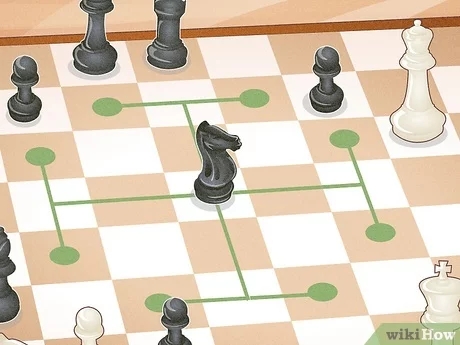
The Knight in Chess
Of all the pieces on the chessboard, the most ancient is that queer duck, the knight. He is the only piece that can jump over other pieces—on his side or the enemy’s—to make a move or capture. His move can only be described as a four-square “L,” starting with one square left, right, up, or down—and then one square diagonally away from the starting point of the move. Or, look at the following illustration:

Possible Knight Moves
Just note that there could be other pieces on any of the squares that are “jumped over” and an enemy piece on the final square on which the knight lands. These are shown with green dots in the above illustration.
The following description of the knight in chess comes from Nicholas Breton’s The Chesse Play (1593):
The Knight is knowledge how to fight
against his Princes enimies,
He neuer makes his walke outright,
But leaps and skips, in wilie wise,
To take by sleight a traitrous foe,
Might slilie seek their ouerthrowe.
Over ther last several months, I have spent some time studying chess problems at Chess.Com. What I find particularly interesting is that, if the knight is in the vicinity, there is a good chance that the key move will be made by him, either checking the king or being sacrificed to allow for checkmates or winning piece grabs.

You must be logged in to post a comment.